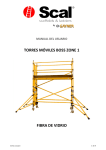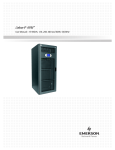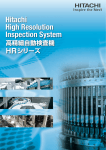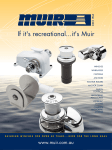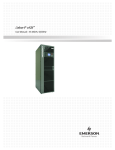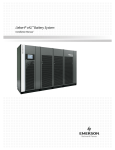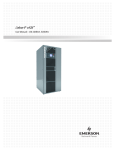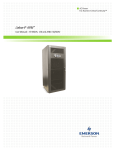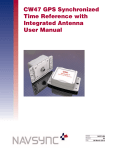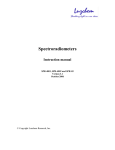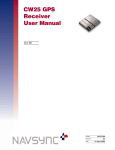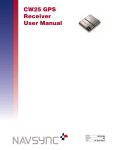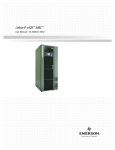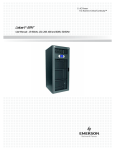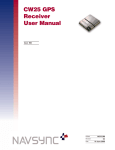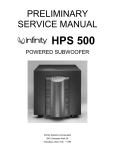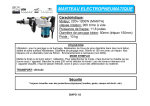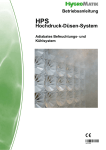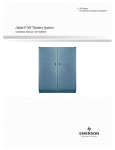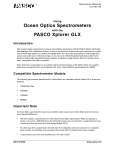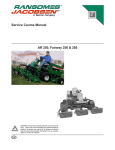Download Liebert® eXM™ External Battery Cabinet
Transcript
Liebert® eXM™ External Battery Cabinet User Manual TABLE OF CONTENTS IMPORTANT SAFETY INSTRUCTIONS . . . . . . . . . . . . . . . . . . . . . . . . . . . . . . . . . . . . . . . . . . . . . . . .1 Save These Instructions . . . . . . . . . . . . . . . . . . . . . . . . . . . . . . . . . . . . . . . . . . . . . . . . . . . . . .1 1.0 MECHANICAL INSTALLATION . . . . . . . . . . . . . . . . . . . . . . . . . . . . . . . . . . . . . . . . . . . . . . . .5 1.1 1.2 1.3 1.4 Introduction . . . . . . . . . . . . . . . . . . . . . . . . . . . . . . . . . . . . . . . . . . . . . . . . . . . . . . . . . . . . . . . . System Composition . . . . . . . . . . . . . . . . . . . . . . . . . . . . . . . . . . . . . . . . . . . . . . . . . . . . . . . . . . Preliminary Checks . . . . . . . . . . . . . . . . . . . . . . . . . . . . . . . . . . . . . . . . . . . . . . . . . . . . . . . . . . Environmental Considerations . . . . . . . . . . . . . . . . . . . . . . . . . . . . . . . . . . . . . . . . . . . . . . . . . 1.4.1 1.4.2 1.4.3 1.5 2.1 Safety . . . . . . . . . . . . . . . . . . . . . . . . . . . . . . . . . . . . . . . . . . . . . . . . . . . . . . . . . . . . . . . . . . . . 11 2.8 2.9 2.10 Connected System . . . . . . . . . . . . . . . . . . . . . . . . . . . . . . . . . . . . . . . . . . . . . . . . . . . . . . . . . . . Stand-Alone and Right-Mounted Systems . . . . . . . . . . . . . . . . . . . . . . . . . . . . . . . . . . . . . . . . Attached/Detached System . . . . . . . . . . . . . . . . . . . . . . . . . . . . . . . . . . . . . . . . . . . . . . . . . . . . Grounding . . . . . . . . . . . . . . . . . . . . . . . . . . . . . . . . . . . . . . . . . . . . . . . . . . . . . . . . . . . . . . . . . . 12 12 13 13 Control Connection. . . . . . . . . . . . . . . . . . . . . . . . . . . . . . . . . . . . . . . . . . . . . . . . . . . . . . . . . . 13 Non-Standard Batteries . . . . . . . . . . . . . . . . . . . . . . . . . . . . . . . . . . . . . . . . . . . . . . . . . . . . . . 14 Batteries Approved for Use in Liebert eXM Systems. . . . . . . . . . . . . . . . . . . . . . . . . . . . . . . 17 2.5.1 2.5.2 2.6 2.7 Connecting the Batteries . . . . . . . . . . . . . . . . . . . . . . . . . . . . . . . . . . . . . . . . . . . . . . . . . . . . . . 12 Power Connection . . . . . . . . . . . . . . . . . . . . . . . . . . . . . . . . . . . . . . . . . . . . . . . . . . . . . . . . . . . 12 2.2.1 2.2.2 2.2.3 2.2.4 2.3 2.4 2.5 Connecting the Liebert eXM Battery Cabinet to the UPS . . . . . . . . . . . . . . . . . . . . . . . . . . . . . 9 BATTERY INSTALLATION . . . . . . . . . . . . . . . . . . . . . . . . . . . . . . . . . . . . . . . . . . . . . . . . . . 11 2.1.1 2.2 Raised Floor Mounting . . . . . . . . . . . . . . . . . . . . . . . . . . . . . . . . . . . . . . . . . . . . . . . . . . . . . . . . . 7 Layout . . . . . . . . . . . . . . . . . . . . . . . . . . . . . . . . . . . . . . . . . . . . . . . . . . . . . . . . . . . . . . . . . . . . . 8 1.6.1 2.0 Battery Room . . . . . . . . . . . . . . . . . . . . . . . . . . . . . . . . . . . . . . . . . . . . . . . . . . . . . . . . . . . . . . . . 5 Storage . . . . . . . . . . . . . . . . . . . . . . . . . . . . . . . . . . . . . . . . . . . . . . . . . . . . . . . . . . . . . . . . . . . . . 5 Installation Considerations . . . . . . . . . . . . . . . . . . . . . . . . . . . . . . . . . . . . . . . . . . . . . . . . . . . . . 6 Moving the Battery Cabinets. . . . . . . . . . . . . . . . . . . . . . . . . . . . . . . . . . . . . . . . . . . . . . . . . . . 7 1.5.1 1.6 5 5 5 5 Floor Installation . . . . . . . . . . . . . . . . . . . . . . . . . . . . . . . . . . . . . . . . . . . . . . . . . . . . . . . . . . . . 17 Cable Entry . . . . . . . . . . . . . . . . . . . . . . . . . . . . . . . . . . . . . . . . . . . . . . . . . . . . . . . . . . . . . . . . . 17 Static Bypass Assembly . . . . . . . . . . . . . . . . . . . . . . . . . . . . . . . . . . . . . . . . . . . . . . . . . . . . . . 18 Control Wiring . . . . . . . . . . . . . . . . . . . . . . . . . . . . . . . . . . . . . . . . . . . . . . . . . . . . . . . . . . . . . 18 2.7.1 Battery Cabinet Interface Connectors. . . . . . . . . . . . . . . . . . . . . . . . . . . . . . . . . . . . . . . . . . . . 18 2.9.1 Accessory Fuses and Back-Feed Breaker Wiring . . . . . . . . . . . . . . . . . . . . . . . . . . . . . . . . . . . 25 Alber BDSUi™ Battery Monitoring System—Optional . . . . . . . . . . . . . . . . . . . . . . . . . . . . . 22 Connecting an Alber BDSUi-UXBM/50™ . . . . . . . . . . . . . . . . . . . . . . . . . . . . . . . . . . . . . . . . 23 Battery Protection . . . . . . . . . . . . . . . . . . . . . . . . . . . . . . . . . . . . . . . . . . . . . . . . . . . . . . . . . . 25 2.10.1 Battery Undervoltage Warning . . . . . . . . . . . . . . . . . . . . . . . . . . . . . . . . . . . . . . . . . . . . . . . . . 25 2.10.2 Battery End-of-Discharge (EOD) Protection. . . . . . . . . . . . . . . . . . . . . . . . . . . . . . . . . . . . . . . 25 3.0 INSTALLATION DRAWINGS . . . . . . . . . . . . . . . . . . . . . . . . . . . . . . . . . . . . . . . . . . . . . . . . .26 4.0 SPECIFICATIONS . . . . . . . . . . . . . . . . . . . . . . . . . . . . . . . . . . . . . . . . . . . . . . . . . . . . . . . .30 5.0 MAINTENANCE . . . . . . . . . . . . . . . . . . . . . . . . . . . . . . . . . . . . . . . . . . . . . . . . . . . . . . . . . 34 5.1 5.2 5.3 5.4 Record Log . . . . . . . . . . . . . . . . . . . . . . . . . . . . . . . . . . . . . . . . . . . . . . . . . . . . . . . . . . . . . . . . Battery Maintenance . . . . . . . . . . . . . . . . . . . . . . . . . . . . . . . . . . . . . . . . . . . . . . . . . . . . . . . . Battery Safety Precautions . . . . . . . . . . . . . . . . . . . . . . . . . . . . . . . . . . . . . . . . . . . . . . . . . . . Torque Requirements . . . . . . . . . . . . . . . . . . . . . . . . . . . . . . . . . . . . . . . . . . . . . . . . . . . . . . . . i 34 34 34 37 TABLE OF CONTENTS IMPORTANT SAFETY INSTRUCTIONS . . . . . . . . . . . . . . . . . . . . . . . . . . . . . . . . . . . . . . . . . . . . . . . .1 Save These Instructions . . . . . . . . . . . . . . . . . . . . . . . . . . . . . . . . . . . . . . . . . . . . . . . . . . . . . .1 1.0 MECHANICAL INSTALLATION . . . . . . . . . . . . . . . . . . . . . . . . . . . . . . . . . . . . . . . . . . . . . . . .5 1.1 1.2 1.3 1.4 Introduction . . . . . . . . . . . . . . . . . . . . . . . . . . . . . . . . . . . . . . . . . . . . . . . . . . . . . . . . . . . . . . . . System Composition . . . . . . . . . . . . . . . . . . . . . . . . . . . . . . . . . . . . . . . . . . . . . . . . . . . . . . . . . . Preliminary Checks . . . . . . . . . . . . . . . . . . . . . . . . . . . . . . . . . . . . . . . . . . . . . . . . . . . . . . . . . . Environmental Considerations . . . . . . . . . . . . . . . . . . . . . . . . . . . . . . . . . . . . . . . . . . . . . . . . . 1.4.1 1.4.2 1.4.3 1.5 2.1 Safety . . . . . . . . . . . . . . . . . . . . . . . . . . . . . . . . . . . . . . . . . . . . . . . . . . . . . . . . . . . . . . . . . . . . 11 2.8 2.9 2.10 Connected System . . . . . . . . . . . . . . . . . . . . . . . . . . . . . . . . . . . . . . . . . . . . . . . . . . . . . . . . . . . Stand-Alone and Right-Mounted Systems . . . . . . . . . . . . . . . . . . . . . . . . . . . . . . . . . . . . . . . . Attached/Detached System . . . . . . . . . . . . . . . . . . . . . . . . . . . . . . . . . . . . . . . . . . . . . . . . . . . . Grounding . . . . . . . . . . . . . . . . . . . . . . . . . . . . . . . . . . . . . . . . . . . . . . . . . . . . . . . . . . . . . . . . . . 12 12 13 13 Control Connection. . . . . . . . . . . . . . . . . . . . . . . . . . . . . . . . . . . . . . . . . . . . . . . . . . . . . . . . . . 13 Non-Standard Batteries . . . . . . . . . . . . . . . . . . . . . . . . . . . . . . . . . . . . . . . . . . . . . . . . . . . . . . 14 Batteries Approved for Use in Liebert eXM Systems. . . . . . . . . . . . . . . . . . . . . . . . . . . . . . . 17 2.5.1 2.5.2 2.6 2.7 Connecting the Batteries . . . . . . . . . . . . . . . . . . . . . . . . . . . . . . . . . . . . . . . . . . . . . . . . . . . . . . 12 Power Connection . . . . . . . . . . . . . . . . . . . . . . . . . . . . . . . . . . . . . . . . . . . . . . . . . . . . . . . . . . . 12 2.2.1 2.2.2 2.2.3 2.2.4 2.3 2.4 2.5 Connecting the Liebert eXM Battery Cabinet to the UPS . . . . . . . . . . . . . . . . . . . . . . . . . . . . . 9 BATTERY INSTALLATION . . . . . . . . . . . . . . . . . . . . . . . . . . . . . . . . . . . . . . . . . . . . . . . . . . 11 2.1.1 2.2 Raised Floor Mounting . . . . . . . . . . . . . . . . . . . . . . . . . . . . . . . . . . . . . . . . . . . . . . . . . . . . . . . . . 7 Layout . . . . . . . . . . . . . . . . . . . . . . . . . . . . . . . . . . . . . . . . . . . . . . . . . . . . . . . . . . . . . . . . . . . . . 8 1.6.1 2.0 Battery Room . . . . . . . . . . . . . . . . . . . . . . . . . . . . . . . . . . . . . . . . . . . . . . . . . . . . . . . . . . . . . . . . 5 Storage . . . . . . . . . . . . . . . . . . . . . . . . . . . . . . . . . . . . . . . . . . . . . . . . . . . . . . . . . . . . . . . . . . . . . 5 Installation Considerations . . . . . . . . . . . . . . . . . . . . . . . . . . . . . . . . . . . . . . . . . . . . . . . . . . . . . 6 Moving the Battery Cabinets. . . . . . . . . . . . . . . . . . . . . . . . . . . . . . . . . . . . . . . . . . . . . . . . . . . 7 1.5.1 1.6 5 5 5 5 Floor Installation . . . . . . . . . . . . . . . . . . . . . . . . . . . . . . . . . . . . . . . . . . . . . . . . . . . . . . . . . . . . 17 Cable Entry . . . . . . . . . . . . . . . . . . . . . . . . . . . . . . . . . . . . . . . . . . . . . . . . . . . . . . . . . . . . . . . . . 17 Static Bypass Assembly . . . . . . . . . . . . . . . . . . . . . . . . . . . . . . . . . . . . . . . . . . . . . . . . . . . . . . 18 Control Wiring . . . . . . . . . . . . . . . . . . . . . . . . . . . . . . . . . . . . . . . . . . . . . . . . . . . . . . . . . . . . . 18 2.7.1 Battery Cabinet Interface Connectors. . . . . . . . . . . . . . . . . . . . . . . . . . . . . . . . . . . . . . . . . . . . 18 2.9.1 Accessory Fuses and Back-Feed Breaker Wiring . . . . . . . . . . . . . . . . . . . . . . . . . . . . . . . . . . . 25 Alber BDSUi™ Battery Monitoring System—Optional . . . . . . . . . . . . . . . . . . . . . . . . . . . . . 22 Connecting an Alber BDSUi-UXBM/50™ . . . . . . . . . . . . . . . . . . . . . . . . . . . . . . . . . . . . . . . . 23 Battery Protection . . . . . . . . . . . . . . . . . . . . . . . . . . . . . . . . . . . . . . . . . . . . . . . . . . . . . . . . . . 25 2.10.1 Battery Undervoltage Warning . . . . . . . . . . . . . . . . . . . . . . . . . . . . . . . . . . . . . . . . . . . . . . . . . 25 2.10.2 Battery End-of-Discharge (EOD) Protection. . . . . . . . . . . . . . . . . . . . . . . . . . . . . . . . . . . . . . . 25 3.0 INSTALLATION DRAWINGS . . . . . . . . . . . . . . . . . . . . . . . . . . . . . . . . . . . . . . . . . . . . . . . . .26 4.0 SPECIFICATIONS . . . . . . . . . . . . . . . . . . . . . . . . . . . . . . . . . . . . . . . . . . . . . . . . . . . . . . . .30 5.0 MAINTENANCE . . . . . . . . . . . . . . . . . . . . . . . . . . . . . . . . . . . . . . . . . . . . . . . . . . . . . . . . . 34 5.1 5.2 5.3 5.4 Record Log . . . . . . . . . . . . . . . . . . . . . . . . . . . . . . . . . . . . . . . . . . . . . . . . . . . . . . . . . . . . . . . . Battery Maintenance . . . . . . . . . . . . . . . . . . . . . . . . . . . . . . . . . . . . . . . . . . . . . . . . . . . . . . . . Battery Safety Precautions . . . . . . . . . . . . . . . . . . . . . . . . . . . . . . . . . . . . . . . . . . . . . . . . . . . Torque Requirements . . . . . . . . . . . . . . . . . . . . . . . . . . . . . . . . . . . . . . . . . . . . . . . . . . . . . . . . i 34 34 34 37 FIGURES Figure 1 Figure 2 Figure 3 Figure 4 Figure 5 Figure 6 Figure 7 Figure 8 Figure 9 Figure 10 Figure 11 Figure 12 Figure 13 Figure 14 Figure 15 Figure 16 Figure 17 Figure 18 Battery cabinets connected, attached to UPS . . . . . . . . . . . . . . . . . . . . . . . . . . . . . . . . . . . . . . . . . . 8 Bolting the Liebert eXM Battery Cabinet to the Liebert eXM UPS. . . . . . . . . . . . . . . . . . . . . . . . . 9 Power cabling for 140-200kVA UPS. . . . . . . . . . . . . . . . . . . . . . . . . . . . . . . . . . . . . . . . . . . . . . . . . 10 Battery cabinet terminal detail, 320mm cabinet; 10-40kVA UPS . . . . . . . . . . . . . . . . . . . . . . . . . 14 Battery cabinet terminal detail, 600mm and 880mm cabinet; 10-120kVA UPS . . . . . . . . . . . . . 15 Liebert eXM UPS terminal detail 10-40kVA . . . . . . . . . . . . . . . . . . . . . . . . . . . . . . . . . . . . . . . . . . 16 Liebert eXM UPS terminal detail 60-100kVA . . . . . . . . . . . . . . . . . . . . . . . . . . . . . . . . . . . . . . . . . 16 Static bypass assembly connections. . . . . . . . . . . . . . . . . . . . . . . . . . . . . . . . . . . . . . . . . . . . . . . . . 18 Single battery cabinet connection to Liebert eXM . . . . . . . . . . . . . . . . . . . . . . . . . . . . . . . . . . . . . 19 Alber BDSUi-UXCM rear panel . . . . . . . . . . . . . . . . . . . . . . . . . . . . . . . . . . . . . . . . . . . . . . . . . . . . 22 Alber BDSUi-UXBM/50 rear panel . . . . . . . . . . . . . . . . . . . . . . . . . . . . . . . . . . . . . . . . . . . . . . . . . 23 Alber battery cabinet monitoring assembly diagram . . . . . . . . . . . . . . . . . . . . . . . . . . . . . . . . . . . 24 Accessory fuses . . . . . . . . . . . . . . . . . . . . . . . . . . . . . . . . . . . . . . . . . . . . . . . . . . . . . . . . . . . . . . . . . 25 Battery cabinet outline and main components—320mm cabinet . . . . . . . . . . . . . . . . . . . . . . . . . 26 Battery cabinet outline drawing and main components—600mm cabinet . . . . . . . . . . . . . . . . . . 27 Battery cabinet outline and main components—880mm cabinet . . . . . . . . . . . . . . . . . . . . . . . . . 28 Lineup arrangement, Liebert eXM with battery and Liebert BDC . . . . . . . . . . . . . . . . . . . . . . . . 29 Battery, circuit breaker and UPS wiring with external batteries with three connecting wires. . . . . . . . . . . . . . . . . . . . . . . . . . . . . . . . . . . . . . . . . . . . . . . . . . . . . . . . . . . . . . . . . . . . . . . . . . 33 TABLES Table 1 Table 2 Table 3 Table 4 Table 5 Table 6 Table 7 Table 8 Table 9 Table 10 Table 11 Table 12 Table 13 Table 14 Table 15 Table 16 Table 17 Table 18 Table 19 Table 20 Table 21 Control wiring for Liebert eXM to battery cabinet . . . . . . . . . . . . . . . . . . . . . . . . . . . . . . . . . . . . . . 9 Interconnect wiring for UPS to battery cabinet . . . . . . . . . . . . . . . . . . . . . . . . . . . . . . . . . . . . . . . 15 Batteries approved for use in Liebert eXM External Battery Cabinet, 320mm . . . . . . . . . . . . . . 17 Batteries approved for use in Liebert eXM External Battery Cabinet, 600mm . . . . . . . . . . . . . . 17 Batteries approved for use in Liebert eXM External Battery Cabinet, 880mm . . . . . . . . . . . . . . 17 Battery cabinet interface—J22 . . . . . . . . . . . . . . . . . . . . . . . . . . . . . . . . . . . . . . . . . . . . . . . . . . . . 18 Battery voltage, nominal and float . . . . . . . . . . . . . . . . . . . . . . . . . . . . . . . . . . . . . . . . . . . . . . . . . 19 Alber UXCM rear panel features . . . . . . . . . . . . . . . . . . . . . . . . . . . . . . . . . . . . . . . . . . . . . . . . . . . 22 Alber UXCM rear panel features . . . . . . . . . . . . . . . . . . . . . . . . . . . . . . . . . . . . . . . . . . . . . . . . . . . 23 Total width of additional battery cabinets and bypass cabinet . . . . . . . . . . . . . . . . . . . . . . . . . . . 29 Physical standards and parameters. . . . . . . . . . . . . . . . . . . . . . . . . . . . . . . . . . . . . . . . . . . . . . . . . 30 Battery cabinet system - breaker details. . . . . . . . . . . . . . . . . . . . . . . . . . . . . . . . . . . . . . . . . . . . . 30 Battery cabinet system—UPS and Liebert eXM Battery Cabinet . . . . . . . . . . . . . . . . . . . . . . . . . 30 Battery DC intermediate circuit . . . . . . . . . . . . . . . . . . . . . . . . . . . . . . . . . . . . . . . . . . . . . . . . . . . 31 Battery short circuit currents. . . . . . . . . . . . . . . . . . . . . . . . . . . . . . . . . . . . . . . . . . . . . . . . . . . . . . 31 320mm battery cabinet mechanical characteristics . . . . . . . . . . . . . . . . . . . . . . . . . . . . . . . . . . . . 32 600mm battery cabinet mechanical characteristics . . . . . . . . . . . . . . . . . . . . . . . . . . . . . . . . . . . . 32 880mm battery cabinet mechanical characteristics . . . . . . . . . . . . . . . . . . . . . . . . . . . . . . . . . . . . 32 Busbars (for power wiring) . . . . . . . . . . . . . . . . . . . . . . . . . . . . . . . . . . . . . . . . . . . . . . . . . . . . . . . . 37 Terminal block with compression lugs (for control wiring) . . . . . . . . . . . . . . . . . . . . . . . . . . . . . . 37 Battery retorque values . . . . . . . . . . . . . . . . . . . . . . . . . . . . . . . . . . . . . . . . . . . . . . . . . . . . . . . . . . 37 ii IMPORTANT SAFETY INSTRUCTIONS SAVE THESE INSTRUCTIONS This manual contains important instructions that should be followed during installation of your Liebert eXM Battery Cabinet and accessories. Read this manual thoroughly, paying special attention to the sections that apply to your installation, before working with the battery system. Retain this manual for use by installing personnel. The following warning applies to all battery cabinets supplied with UPS systems.. ! WARNING Internal battery strapping must be verified prior to moving a battery cabinet (after initial installation). • Battery cabinets contain non-spillable batteries. • Keep units upright. • Do not stack. • Do not tilt. Failure to heed this warning could result in smoke, fire or electric hazard. Call 1-800-LIEBERT prior to moving battery cabinets (after initial installation). ! AVERTISSEMENT L’arrimage des batteries internes doit être vérifié avant de déplacer une armoire de batteries (après l’installation initiale). • Les armoires de batteries contiennent des batteries étanches. • Maintenir les systèmes à la verticale. • Ne pas empiler. • Ne pas incliner. Le non-respect de ces consignes comporte des risques liés à la fumée, au feu ou à l’électricité. Composez le 1 800 LIEBERT avant de déplacer des armoires de batteries (après l’installation initiale). 1 Liebert® eXM™ Battery Cabinet ! WARNING Risk of electrical shock. Can cause personal injury and death. Check for voltage with both AC and DC voltmeters before working within the UPS. Check for voltage with both AC and DC voltmeters before making contact. Only properly trained and qualified personnel wearing appropriate safety headgear, gloves, shoes and glasses should be involved in installing the UPS or preparing the UPS for installation. When performing maintenance with any part of the equipment under power, service personnel and test equipment should be standing on rubber mats. Lead-acid batteries contain hazardous materials. Batteries must be handled, transported and recycled or discarded in accordance with federal, state and local regulations. Because lead is a toxic substance, lead-acid batteries must be recycled rather than discarded. Do not dispose of battery or batteries in a fire. The battery may explode. Do not open or mutilate the battery or batteries. Released electrolyte is harmful to the skin and eyes. It is toxic. The following precautions must be observed when working on batteries: • Remove watches, rings and other metal objects. • Use tools with insulated handles. • Wear rubber gloves and boots. • Do not lay tools or metal parts on top of batteries. • Disconnect charging source prior to connecting or disconnecting battery terminals. • Determine whether the battery is grounded. If it is grounded, remove source of ground. Contact with any part of a grounded battery can result in electrical shock. The likelihood of such shock will be reduced if such grounds are removed during installation and maintenance. ! AVERTISSEMENT Risque de décharge électrique pouvant causer des blessures graves, voire mortelles. Vérifiez les tensions au moyen de voltmètres c.a. et c.c. avant d’utiliser le système ASC. Vérifiez les tensions avec des voltmètres c.a. et c.c. avant d'établir tout contact. Seuls des employés qualifiés et dûment formés portant un casque, des gants, des chaussures et des lunettes de écurité adéquats doivent se charger d’installer le système ASC ou de le préparer pour l’installation. Les responsables de l'entretien et l’équipement d’essai doivent reposer sur des tapis de caoutchouc lors de toute intervention sur une pièce d’équipement sous tension. Les batteries au plomb-acide renferment des matières dangereuses. Les batteries doivent être manipulées, transportées, recyclées ou jetées conformément aux règlements fédéraux, provinciaux et municipaux. Étant donné que le plomb est une substance toxique, les batteries au plomb-acide doivent être recyclées plutôt que mises au rebut. Ne jetez jamais de batteries au feu car elles risquent d’exploser. Vous ne devez ni ouvrir ni percer les batteries, car l’électrolyte qui s'en écoulerait est nocif pour la peau et les yeux. Cet électrolyte est toxique. Lorsque vous travaillez avec des batteries, prenez les précautions suivantes : • • • • • Retirez montre, bagues et tout autre objet métallique. Utilisez des outils dont le manche est isolé. Portez des gants et des bottes de caoutchouc. Ne posez aucun outil ni pièce métallique sur le dessus d’une batterie. Déconnectez la source de chargement avant de brancher ou de débrancher les bornes d’une batterie. • Vérifiez si la batterie est mise à la terre. Le cas échéant, éliminez la cause de la mise à la terre. Le contact avec toute partie d'une batterie mise à la terre peut provoquer une décharge électrique. Pour réduire de tels risques d'accident, débranchez les prises de terre avant de procéder à l’installation ou à l'entretien. Liebert® eXM™ Battery Cabinet 2 ! WARNING Risk of electric shock. Can cause personal injury and death. In case of fire involving electrical equipment, use only carbon dioxide fire extinguishers or those approved for use in fighting electrical fires. AVERTISSEMENT Risque de décharge électrique pouvant causer des blessures graves, voire mortelles. En cas d’incendie associé à du matériel électrique, n'utilisez que des extincteurs à dioxyde de carbone ou homologués pour la lutte contre les incendies d’origine électrique. ! WARNING Risk of heavy unit falling over. Improper handling can cause equipment damage, injury or death. Exercise extreme care when handling battery cabinets to avoid equipment damage or injury to personnel. The battery system cabinets weigh from 881 to 3341 lb. (400 to 1515kg). Locate center of gravity symbols and determine unit weight before handling each cabinet. Test lift and balance the cabinets before transporting. Maintain minimum tilt from vertical at all times. Slots at the base of the module cabinets are intended for forklift use. Base slots will support the unit only if the forks are completely beneath the unit. Read all of the following instructions before attempting to move, lift, or remove packaging from unit, or prepare unit for installation. ! AVERTISSEMENT Le centre de gravité élevé de l’appareil présente un risque de renversement. Une mauvaise manutention peut entraîner des dommages matériels, des blessures et même la mort. Faites preuve d'une extrême prudence lors de la manutention des armoires ASC afin d’éviter de les endommager ou de blesser le personnel. Le poids du module ASC varie entre 400 et 1 515 kg (881 et 3341 lb). Identifiez les symboles de centre de gravité et déterminez le poids de l'appareil avant de manipuler chaque armoire. Testez le levage et l’équilibre des armoires avant de transporter l'appareil. Maintenez en tout temps l'inclinaison verticale minimale. Les fentes situées à la base des armoires du module sont conçues pour utiliser le chariot élévateur. Les fentes situées à la base peuvent soutenir le système seulement si les fourches se trouvent complètement sous le système. Lisez toutes les instructions ci-dessous avant de tenter de déplacer, lever, déballer ou préparer le système en vue de son installation. 3 Liebert® eXM™ Battery Cabinet ! WARNING Risk of electrical shock and fire. Can cause equipment damage, personal injury or death. Under typical operation and with all UPS doors closed, only normal safety precautions are necessary. The area around the UPS system should be kept free of puddles of water, excess moisture and debris. Only test equipment designed for troubleshooting should be used. This is particularly true for oscilloscopes. Always check with an AC and DC voltmeter to ensure safety before making contact or using tools. Even when the power is turned Off, dangerously high potential electric charges may exist at the capacitor banks and at the DC connections. All wiring must be installed by a properly trained and qualified electrician. All power and control wiring must comply with all applicable national, state and local codes. One person should never work alone, even if all power is disconnected from the equipment. A second person should be standing by to assist and to summon help in case of an accident. ! AVERTISSEMENT Risque de décharge électrique et d’incendie. Pouvant entraîner des dommages matériels, des blessures et même la mort. Les précautions de sécurité habituelles suffisent lorsque le système ASC est en mode de fonctionnement normal et que toutes les portes sont fermées. La zone entourant le système ASC doit être exempte de flaques d'eau, d’humidité excessive et de débris. Seuls des équipements d’essai conçus pour le dépannage doivent être utilisés. Cette mise en garde couvre notamment les oscilloscopes. Utilisez toujours un voltmètre c.a. et c.c. pour vérifier les tensions avant d'établir un contact ou d’utiliser des appareils. Des tensions dangereusement élevées peuvent demeurer dans les batteries de condensateurs et au niveau des raccords c.c., même une fois l'alimentation coupée. Tous les raccords doivent être effectués par un électricien dûment formé et qualifié. Tous les câbles d’alimentation et de commande doivent être conformes aux codes nationaux et locaux en vigueur. Une personne ne devrait jamais travailler seule, même si toute l’alimentation d’entrée est coupée. Une deuxième personne devrait toujours être présente pour porter assistance ou chercher de l'aide en cas d’accident. NOTICE This unit complies with the limits for a Class A digital device, pursuant to Part 15 Subpart J of the FCC rules. These limits provide reasonable protection against harmful interference in a commercial environment. This unit generates, uses and radiates radio frequency energy and, if not installed and used in accordance with this instruction manual, may cause harmful interference to radio communications. Operation of this unit in a residential area may cause harmful interference that the user must correct at his own expense. Liebert® eXM™ Battery Cabinet 4 Mechanical Installation 1.0 MECHANICAL INSTALLATION 1.1 Introduction This following section describes the requirements that must be taken into account when planning the positioning and cabling of the Liebert eXM battery equipment. This chapter is a guide to general procedures and practices that should be observed by the installing engineer. The particular conditions of each site will determine the applicability of such procedures. NOTICE Risk of improper startup. Can cause equipment damage. Do not apply electrical power to the UPS equipment before the arrival of the commissioning engineer. 1.2 System Composition A battery system can consist of a number of equipment cabinets, depending on the individual system design requirements, e.g., Battery Cabinet. Refer to 3.0 - Installation Drawings for positioning the cabinets. 1.3 Preliminary Checks Before installing the battery equipment, carry out the following preliminary checks: • Remove all panels and visually inspect the cabinet, batteries, bus connections and cabinet for any shipping damage. Exercise caution; voltage is present within the battery cabinet even before installation. If there are signs of damage, do not proceed. Call Liebert Services at 1-800-542-2378. • Report any damage to the shipper immediately. • Verify that the correct equipment is being installed. The equipment supplied has an identification tag inside the main door. • Verify that the battery room satisfies the environmental conditions stipulated in the equipment specification, paying particular attention to the ambient temperature and air exchange system. 1.4 Environmental Considerations 1.4.1 Battery Room Batteries should be installed in an environment where the temperature is consistent and even over the whole battery. Temperature is a major factor in determining the battery life and capacity. Typical battery manufacturer performance data are quoted for an operating temperature between 68°F and 77°F (20 and 25°C). Operating above this range will reduce the battery life while operation below this range will reduce the battery capacity. Battery Temperature—In a normal installation, the battery temperature should be kept between 59 and 77°F (15°C and 25°C). NOTE Keep batteries away from main heat sources, main air inlets, etc. 1.4.2 Storage Storage—The batteries can be stored for up to six months without appreciable deterioration. Contact Emerson Network Power Liebert Services for recommended precautions if planning to store a battery cabinet for longer than six months or at temperatures higher than 77°F (25°C). NOTICE Risk of deep discharge. Can cause permanent damage to batteries. An unused battery must be recharged periodically as recommended by the battery manufacturer. 5 Liebert® eXM™ Battery Cabinet Mechanical Installation 1.4.3 Installation Considerations Position—Refer to UPS manual (SL-25648 for 10-40kVA units, SL-25650 for 60-100kVA units or SL-26100 for 120-200kVA units) or submittals for complete system line-up details. Liebert eXM Battery Cabinet(s) are designed to be located next to each UPS module on the left side only and are also available in stand-alone configurations with painted side panels. The front access design eliminates side and rear service clearance requirements. Refer to Tables 16 through 18 for battery cabinet dimensions and weights. Bolt-On Cabinets—Matching battery cabinets are designed to bolt only onto the left side of the UPS module cabinet. Use bolts that ship with each unit to connect cabinet frames at posts, two places in the front and two places in the rear. Service Clearance—Allow front access to the battery cabinet at all times for maintenance and service. Electrical codes require that the battery cabinet be installed with no less than 3 ft. (1m) of clearance at the front of the cabinet when operating. No service clearance is required on either the side or rear. Clearance at the top of the cabinet is 24" (610mm). Cables (10-120kVA units)—Cables may be run between the cabinets through cutouts in the top of the cabinet, eliminating the need for external conduit runs. Route cables before moving cabinets into final position for bolting together. No top or bottom entry cables are required, except for remotely located cabinets which require conduits. Power terminals, auxiliary terminals blocks and circuit breakers are accessed from the front and top. Removable panels on the top are secured to the chassis by screws. The door can be opened to give access to the power connections bars, auxiliary terminal blocks and breakers. The front door can be opened 180° for easier service and more flexibility in installation. Software—To allow the UPS to accurately display the battery run time, the number of battery cabinets must be noted when performing initial startup and setup using the configuration software. This is to be performed by the Liebert Services engineer when commissioning the unit. Casters and Adjustable Stops—The adjustable stops are not designed to bear the full weight of the cabinet. Lower the stops until they are finger-tight in contact with the floor. Then tighten a small amount with a wrench (less than two turns) to give a good friction fit. When mounting the battery cabinet on seismic stands, ensure that the casters are bearing the weight of the cabinet. Liebert® eXM™ Battery Cabinet 6 Mechanical Installation 1.5 Moving the Battery Cabinets The battery cabinets should be moved with a forklift or similar equipment. The battery cabinet has casters for movement over short distances. The bottoms of the battery cabinets are reinforced to permit lifting by forklift to move them longer distances. The bottom structure will support the unit only if the forks are completely beneath the unit. The route between the point of arrival and the unit’s installation location must be planned to make sure that all passages are wide enough for the unit and that floors will support its weight (for instance, check that doorways, lifts, ramps, etc., are big enough and that there are no impassable corners or changes in the level of corridors). Ensure that the cabinet weight is within the designated surface weight loading (kg/cm2) of any handling equipment. See Tables 16 through 18 for weight details. Ensure that any lifting equipment used to move the battery equipment has sufficient lifting capacity. Because the weight distribution in the cabinet is not symmetrical, use extreme care during handling and transporting. When moving the unit by forklift, care must be taken to protect the panels. Handling the unit with straps is not authorized. ! WARNING Risk of heavy unit falling over. Improper handling can cause equipment damage, injury or death. Exercise extreme care when handling battery cabinets to avoid equipment damage or injury to personnel. The battery system cabinets weigh from 881 to 3341 lb. (400 to 1515kg). Locate center of gravity symbols and determine the unit’s weight before handling a cabinet. Test lift and balance the cabinets before moving them. Maintain minimum tilt from vertical at all times. Read all of the following instructions before attempting to move, lift, or remove packaging from unit, or prepare unit for installation. ! AVERTISSEMENT Le centre de gravité élevé de l’appareil présente un risque de renversement. Une mauvaise manutention peut entraîner des dommages matériels, des blessures et même la mort. Faites preuve d'une extrême prudence lors de la manutention des armoires ASC afin d’éviter de les endommager ou de blesser le personnel. Le poids du module ASC varie entre 400 et 1 515 kg (881 et 3341 lb). Identifiez les symboles de centre de gravité et déterminez le poids de l'appareil avant de manipuler chaque armoire. Testez le levage et l’équilibre des armoires avant de transporter l'appareil. Maintenez en tout temps l'inclinaison verticale minimale. Lisez toutes les instructions ci-dessous avant de tenter de déplacer, lever, déballer ou préparer le système en vue de son installation. 1.5.1 Raised Floor Mounting If the equipment is to be placed on a raised floor, it should be mounted on a pedestal suitably designed to accept the equipment point loading. Refer to the base view to design this pedestal. 7 Liebert® eXM™ Battery Cabinet Mechanical Installation 1.6 Layout Depending on the site layout, the battery cabinets can be installed in any of several ways: • • • • Connected—Multiple battery cabinets bolted together Stand-Alone System—Cabinets not bolted to a Liebert eXM Attached—Battery cabinets are bolted to a Liebert eXM Detached—Battery cabinets are not bolted to a Liebert eXM See Figure 1. Figure 1 Battery cabinets connected, attached to UPS RECOMMENDED INSTALLATION Battery cabinet systems ordered as left -side installation will include factory -supplied cabling to connect the battery system to the 10-120kVA UPS models. The cables will be routed internally . ALTERNATE INSTALLATION Without attached Maintenance Bypass Cabinet Battery cabinets may be mounted to the right of the UPS, but all cabling between the battery cabinets and the 10-120kVA UPS models must be external and performed by others . Liebert® eXM™ Battery Cabinet Additional Liebert eXM Battery Cabinet Liebert eXM UPS 8 Liebert eXM Battery Cabinet Liebert eXM Battery Cabinet Liebert eXM UPS Liebert eXM Maintenance Bypass Cabinet Optional Additional Liebert eXM Battery Cabinet Mechanical Installation 1.6.1 Connecting the Liebert eXM Battery Cabinet to the UPS After the battery cabinet equipment has been positioned and secured for operation and the batteries have been connected, connect the power cables as described below (see Figure 9). 1. Verify that all incoming high and low voltage power circuits are de-energized and locked out or tagged out before installing cables or making any electrical connections. 2. Remove the UPS front input output panel to gain access to the ground and battery busbars. 3. Remove the battery cabinet front panel to gain access to the busbars. 4. Connect the safety ground and any necessary bonding ground cables to the copper ground busbar. (example: UPS located behind the output busbars.). All cabinets in the UPS system must be connected to the user's ground connection. NOTE The grounding and neutral bonding arrangement must be in accordance with the National Electrical Code and all applicable local codes. 5. Connect the system battery cables from the UPS battery terminals (+, N, -) to battery cabinet breaker BCB (+, N, -) as shown in Figure 9. Be sure that the battery connections are made with the right polarity, and tighten the connections to the torque specified in Table 19. Do not close the battery circuit breaker before the equipment has been commissioned. 6. Connect TB1 from battery cabinet to J22 on the UPS according to Table 1. NOTE The shunt trip drive capability for the battery breaker is 220VDC at 2.4A. Figure 2 Bolting the Liebert eXM Battery Cabinet to the Liebert eXM UPS Flat Washer Washer M10 2 Split, M10 3 B 1 Hex Head Bolt M10 x 30mm DETAIL B Liebert eXM Liebert eXM UPS Battery Cabinet Table 1 Control wiring for Liebert eXM to battery cabinet From To Liebert eXM UPS Bypass Module (J22) Battery Cabinet Terminal Strip (TB1) J22.15 TB1-12 J22.13 TB1-11 J22.11 TB1-10 J22.1 TB1-6 J22.3 TB1-7 J22.5 TB1-8 J22.7 TB1-9 9 Liebert® eXM™ Battery Cabinet Mechanical Installation Figure 3 Power cabling for 140-200kVA UPS See Table 13 for power cable sizing. DC Input Busbar 140-200kVA Liebert eXM Battery Cabinet 1 Liebert® eXM™ Battery Cabinet Battery Cabinet 2 10 Battery Cabinet 3 Battery Cabinet 4 Battery Installation 2.0 BATTERY INSTALLATION 2.1 Safety Special care should be taken when working with the batteries associated with the Liebert eXM Battery System equipment. When all the cells are connected together, the battery terminal voltage will exceed 288VDC and is potentially lethal. A primary safety consideration is to install the battery equipment in an isolated area, accessible only to properly trained and qualified maintenance personnel. ! WARNING Risk of electrical shock and fire. Can cause equipment damage, personal injury or death. Servicing of batteries should be performed or supervised by personnel knowledgeable of batteries and the required precautions. Keep unauthorized personnel away from batteries. ! AVERTISSEMENT Risque de décharge électrique et d’incendie. Pouvant entraîner des dommages matériels, des blessures et même la mort. Le remplacement des batteries doit être effectué ou supervisé par des membres du personnel dotés des compétences requises et connaissant les précautions à prendre. Le personnel non autorisé ne doit pas avoir accès aux batteries. Lead-acid batteries can present a risk of fire because they generate hydrogen gas. In addition, the electrical connections must be protected against accidental short circuits which can cause sparks. The following procedures should be followed: • DO NOT SMOKE when near batteries. • DO NOT cause flame or spark in battery area. • Discharge static electricity from body before touching batteries by first touching a grounded metal surface. • After replacing battery jars in a battery cabinet, replace the retaining straps that hold the jars in place on the shelves. This will limit accidental movement of the jars and connectors should the cabinet ever need to be repositioned or relocated. Regular maintenance of the battery module is an absolute necessity. Periodic inspections of battery and terminal voltages, specific gravity and connection resistance should be made. Strictly follow the procedures outlined in the battery manufacturer’s manual, available on the manufacturer’s Web site. Valve-regulated lead-acid (sealed-cell) batteries do require periodic maintenance. Although maintenance of electrolyte levels is not required, visual inspections and checks of battery voltage and connection resistance should be made. NOTICE Risk of equipment damage. Batteries should be cleaned with a dry cloth or a cloth lightly moistened with water. Do not use cleaners on the batteries. Solvents can make the battery cases brittle. Because individual battery characteristics are not identical and may change over time, the UPS module is equipped with circuitry to equalize battery cell voltages. This circuit increases charging voltage to maintain flooded type battery cells at full capacity. ! WARNING Risk of electric shock, explosive reaction, hazardous chemicals and fire. Can cause equipment damage, personal injury and death. Do not use equalize charging with valve-regulated, lead-acid batteries, such as those in Liebert Battery Cabinets. Refer to the battery manufacturer’s manual, available on the manufacturer’s Web site, for specific information about equalize charging. 11 Liebert® eXM™ Battery Cabinet Battery Installation ! AVERTISSEMENT Risque de décharge électrique, de réaction explosive, d’incendie et d’exposition à des produits chimiques dangereux pouvant entraîner des dommages matériels, des blessures et même la mort. N'utilisez pas de charge d’égalisation avec des batteries d'accumulateurs au plomb à régulation par soupape, comme celles utilisées dans les armoires de batterie Liebert. Reportez-vous au manuel du fabricant des batteries, disponible sur le site Web du fabricant, pour obtenir des renseignements précis sur la charge d’égalisation. The following general battery safety precautions and warnings must be observed at all times: • A battery can present risk of electric shock or burn from high short circuit currents. • When connected in a string, the voltage will exceed 288VDC. This voltage is potentially lethal. Always observe high-voltage precautions. • Eye protection must be worn to prevent injury from accidental electrical arcs. • Remove rings, watches, necklaces, bracelets and all other metal objects. • Use only tools with insulated handles. • Wear appropriate personal protective equipment when handling batteries. • If a battery leaks electrolyte or is otherwise physically damaged, it should be placed in a container resistant to wire and disposed of in accordance with local regulations. • If electrolyte comes into contact with the skin, the affected area should be washed immediately with plenty of clean water. • Batteries must always be disposed of according to local environmental laws. • When replacing batteries, use the same number and type that were originally fitted. • Disconnect charging source prior to connecting or disconnecting battery terminals. • Determine if the battery is grounded. If it is grounded, remove source of ground. Contact with any part of a grounded battery can result in electrical shock. • Battery support tray must be used whenever a battery tray is being pulled out. 2.1.1 Connecting the Batteries If the Liebert eXM battery cabinet is installed on a raised floor, the battery power cables and circuit breaker control cables may be routed to the UPS cabinet through the bottom of the cabinet. If the Liebert eXM battery cabinets are installed adjacent to one another on a solid floor, these cables may be passed between the cabinets through the sides of the cabinets. Intertray connections must be made before the battery cabinet may be used. 2.2 Power Connection Depending on the site layout, the battery cabinets can be cabled as shown in Figure 1. 2.2.1 Connected System For cabinets ordered as connected (battery cabinets will bolt to each other), the busbars are connected between battery cabinets with the supplied power cables. 2.2.2 Stand-Alone and Right-Mounted Systems The customer must supply all interconnecting cables and hardware for stand-alone and right-mounted cabinets. See Table 13 for current ratings and recommended cable sizes according to local codes. Liebert® eXM™ Battery Cabinet 12 Battery Installation 2.2.3 Attached/Detached System For battery cabinets that are connecting to a Liebert eXM UPS, (see Figure 1), cables will run from the positive, negative and neutral busbars of the adjacent battery cabinet to the positive, negative and neutral DC connections of the UPS. For attached systems (the cabinets bolt to each other) 10-120kVA Liebert eXM UPS models, the cables can run internal to the cabinets and will be supplied. For detached systems (the cabinets do not bolt to each other), the cables must be run outside the cabinets. The customer must supply all the interconnecting cables and hardware. See Table 13 for current ratings and recommended cable sizes. 2.2.4 Grounding The ground cables and hardware will be supplied for cabinets ordered as connected or attached. The customer must supply the cables and hardware for detached and stand-alone cabinets. Size grounding conductor according to local codes. See terminal detail drawings for the location of the ground busbar. 2.3 Control Connection Each Liebert eXM Battery Cabinet contains a Battery Interface Board (BIB). See 2.7 - Control Wiring. See Figure 9 and Table 1 for control wiring between the Liebert eXM Battery Cabinet and the Liebert eXM UPS. See Figures 4 through 7 for battery cabinet terminal details NOTE Care must be taken to route the control cables away from high voltage cables or busbars. 13 Liebert® eXM™ Battery Cabinet Battery Installation 2.4 Non-Standard Batteries When batteries other than a matching battery cabinet are used, a remote battery disconnect switch with overcurrent protection is required per the National Electrical Code. Contact your local Emerson sales representative about this option. Refer to Figure 18 for details. Install battery racks, cabinets and batteries in accordance with the manufacturer's instructions. Verify that the battery area has adequate ventilation and battery operating temperature complies with the manufacturer’s specifications and with all applicable national and local codes. If you have any questions concerning batteries, battery racks or accessories, contact Liebert Services at 1-800-543-2378. NOTE The user-supplied battery DC bypass breakers or fuses should have a minimum overload rating of 8kA and 500V. Figure 4 Battery cabinet terminal detail, 320mm cabinet; 10-40kVA UPS DC Power Connections See Detail A NOTES 1. All dimensions are in inches (mm). 2. Control wiring and power wiring must be run in separate conduits. 3. Copper cables only are recommended. 4. All wiring is to be in accordance with national and local electrical codes. 5. If the battery cabinet is attached to the left side of the UPS, Emerson will supply interconnect cables. 12.6" (320mm) Detail A 37.5" (953mm) DC Breaker Ground Bus 78.5" (1994mm) LEFT SIDE Panel Removed Liebert® eXM™ Battery Cabinet FRONT Door Removed Bolt Shaft Size: M10 Torque: 240 lb-in. (27Nm) 14 RIGHT SIDE Panel Removed EXM 16003 Rev. 1 Battery Installation Figure 5 Battery cabinet terminal detail, 600mm and 880mm cabinet; 10-120kVA UPS 600mm Battery Cabinet Bolt Shaft Size: M12 Torque: 428 lb-in (48Nm) 3.66" (93mm) 23.6" (600mm) See Detail A DC Connection Busbars 3.66" (93mm) 1.75" (45mm) 1.75" (45mm) Ground Bus 1.75" (45mm) 1.75" (45mm) 1. Control wiring and 1.65" power wiring must be (42mm) 1.65" (42mm) run in separate 4.96" conduits. Detail A (126mm) 2. Emerson recommends using only copper cables. 880mm Battery Cabinet 3. All wiring must be in accordance with See Detail A national and local Bolt Shaft Size: M12 electrical codes. Torque: 428 lb-in (48Nm) 4. Interconnection cables factory-supplied if the battery cabinet is attached to the left side of the UPS. FRONT Door Removed EXM16004 Rev. 0 37.5" (953mm) DC Connection Busbars Ground Bus 1.75" (45mm) 1.65" (42mm) 3.3" (84mm) Detail A RIGHT SIDE Panel Removed Table 2 Run EXM16004 Rev. 0 Interconnect wiring for UPS to battery cabinet From To Conductors A UPS Battery Busbar External Battery Cabinet Busbar Positive, DC Neutral, Negative B Battery Cabinet Terminal Block TB1 UPS Static Bypass Assembly J22 Battery Breaker Shunt and Aux Contacts See Figure 9 for additional details. 15 Liebert® eXM™ Battery Cabinet Battery Installation Figure 6 Liebert eXM UPS terminal detail 10-40kVA 23.6" (600mm) Batt + Batt N Batt - See Detail A 1.6" (41mm) (13 Places Typical) 1.4" (36mm) 78.5" (1994mm) Batteries DETAIL A Busbar Dimensions EXM16002 Rev. 0 FRONT VIEW Door Removed Liebert eXM UPS terminal detail 60-100kVA 42.4" (1077mm) 37.5" (953mm) 23.6" (600mm) Batt - Refer to Table 2 for interconnect wiring. Batt + Batt - N Figure 7 See Detail A 78.4" (1991mm) DETAIL A FRONT VIEW NOTES (Door Removed) 1. Control wiring and power wiring must be run in separate conduits. 2. Emerson recommends using only copper cables. 3. All wiring must be in accordance with national and local electrical codes. Liebert® eXM™ Battery Cabinet 16 RIGHT SIDE VIEW (Panel Removed) Battery Installation 2.5 Batteries Approved for Use in Liebert eXM Systems Table 3 Batteries approved for use in Liebert eXM External Battery Cabinet, 320mm Supplier Part Number Enersys East Penn Table 4 26 (11.8) 12HX205 43 (19.5) HR1500 27 (12) HR2000 40 (18) Part Number Enersys East Penn Weight, Single Battery, lb. (kg) 12HX150E 26 (11.8) 12HX205 43 (19.5) 12HX300-FR 60 (27.2) 12HX330-FR 71 (32.2) HR1500 27 (12) HR2000 40 (18) HR3000 61 (28) HR3500 71 (32) Batteries approved for use in Liebert eXM External Battery Cabinet, 880mm Supplier Enersys East Penn 2.5.1 12HX150E Batteries approved for use in Liebert eXM External Battery Cabinet, 600mm Supplier Table 5 Weight, Single Battery, lb. (kg) Part Number Weight, Single Battery, lb. (kg) 12HX400-FR 80 (36.3) 12HX505-FR 103 (46.7) 12HX540-FR 106 (48.1) HR4000 80 (36) HR5000 98 (44) HR5500 107 (49) Floor Installation If the Liebert eXM, Liebert BDC or battery cabinet is to be placed on a raised floor, the UPS should be mounted on a pedestal that will support the equipment point loading. Refer to the bottom view in Figures 14, 15 or 16 to design this pedestal. The mechanical stops are used to prevent the cabinet from rolling and should not be used for leveling or bearing the battery cabinet’s weight. 2.5.2 Cable Entry Cables can enter the Liebert eXM, Liebert BDC and battery cabinets from the top or bottom through removable metal plates. Some plates have factory-punched holes and others are designed to allow the personnel to punch holes for fitting and securing the conduit. Once the conduit holes are punched, these plates should be reattached to the UPS. The conduit size and wiring method must be in accordance with all local, regional and national codes and regulations, including NEC ANSI/NFPA 70. 17 Liebert® eXM™ Battery Cabinet Battery Installation 2.6 Static Bypass Assembly Figure 8 Static bypass assembly connections DB9 DB9 J22 DB15 Liebert IntelliSlot Bays 1, 2, 3 Ready Switch The Static bypass assembly has three Liebert IntelliSlot interface card bays and connections for ancillary cabinets (Liebert BDC and battery) and for options. 2.7 Control Wiring 2.7.1 Battery Cabinet Interface Connectors The battery cabinet interface is on the Auxiliary Terminal Block at J22. Refer to Figure 9 for circuit details. Table 6 Battery cabinet interface—J22 Pin Name Description 1 12V_DRV BCB driver signal 3 BCB STATUS BCB state signal 5 GND_DRY Dry ground 7 BCB_ON BCB on line signal 9 NC NC 11 GND_DRY Dry ground 13 TMP_BATT External Battery temperature 15 12V_A Power 17 GND_DRY Dry ground 19 BATT_GND_FAULT Battery ground fault signal NOTE All auxiliary cables of terminal must be double-insulated. Wire should be 20-16AWG stranded for maximum runs between 80 and 200 feet (25-60m), respectively. Liebert® eXM™ Battery Cabinet 18 Battery Installation Figure 9 Single battery cabinet connection to Liebert eXM Wire 6 Wire 4 Bat+ Bat_N Bat- Power Terminal Block + Wire 7 Wire 3 Wire 5 Neutral Wire 8 Aux. Wire 1 + Positive Negative Wire 2 N Wire 3 - External Battery MX Wire 4 Ground 112 x4 RED UPS Module BLACK RED TB1 ORANGE BLACK W/R BLK X101 J4 W/BLK UH8351A8 BLUE COM WHITE VIOLET WHITE BLK BLK BRN BRN WHT WHT GRN GRN BLK BLK WHITE RED J3 220VDC UHW241C2 BCB CONTROL BOARD RED BLK 220VDC NX 0100kTE46FN01 X9 X107 3 2 1 X100 J2 DRV AUX GND1 USE WHITE RED X9_J22 19 20 BAT_GND_FAULT X108 X102 X104 X103 1 2 3 BLK WHITE RED 17 18 GND_DRY RED 15 16 +12V_A X106 WHITE 13 14 TEMP_BAT X105 BLK GRN WHT BRN BLK Refer to submittal EXM14003A and EXM14003B for wiring two, three and four battery cabinets together. External Connections 11 12 GND_DRY 9 10 7 8 BCB_ONLINE 5 6 GND_DRY 3 4 BCB_STATE 1 2 +12V_BCB_DRV All service and initial connections of batteries must be performed by properly trained and qualified personel. Matching Battery Cabinets—Optional Although the individual battery cells are sealed (valve-regulated) and require only minimal maintenance, the Battery Cabinets should be given a periodic inspection and electrical check. Checks should be performed at least annually to ensure years of trouble-free service. Voltage Records: With the Battery Cabinet DC circuit breaker closed and the connected UPS operating, measure and record battery float voltage. With the DC circuit breaker open, measure and record the nominal (open circuit) voltage. Both these measurements should be made across the final positive and negative terminal lugs. Compare these values with those shown below. The recorded nominal voltage should be no less than the value shown; while the recorded float voltage should be within the range shown. If a discrepancy is found, contact Liebert Services. Table 7 Battery voltage, nominal and float Battery Voltage, VDC Number of Cells Nominal/ Open Cell Float 144 288 324 Power Connections: Check for corrosion and connection integrity. Inspect wiring for discolored or cracked insulation. Clean and/or retighten as required. Refer to torque specifications in Table 21. 19 Liebert® eXM™ Battery Cabinet Battery Installation Battery Cell Terminals: Check for discoloration, corrosion and connection integrity. Clean and tighten if necessary. Note that when installing a new battery, the initial torque value is 5 lb.-in. more than the retorque value. Table 21 shows battery retorque values. All batteries are supplied with tab washers for easier connection to the Alber BDSUi™ or other monitoring equipment. If the system uses a different model battery, contact Liebert Services for the required torque value. To access battery cell terminals, disconnect the inter-tier cable and two shelf retaining screws. Once disconnected, insulate (with protective boot or electrical tape) the cables to prevent accidental shorts. The battery shelf can now be pulled out. Tighten each terminal connection to the retorque value. When replacing a battery, the terminal connections must be cleaned and tightened. Disconnect and insulate the cables connected to the battery. Secure each battery shelf with retaining screws when maintenance is complete. ! WARNING Risk of heavy unit tipping over while being moved. Can cause property damage, injury and death. The 320mm Liebert eXM Battery Cabinet must be moved into position with shipping brackets in place to provide side-to-side stabilization. The brackets may be removed after the battery cabinet is bolted to the Liebert eXM UPS. The casters are strong enough for movement across even surfaces only. Casters may fail if they are subjected to shock loading, such as being dropped or rolled over holes in the floor or obstructions. Such failure may cause the unit to tip over, injuring personnel and damaging the equipment. ! AVERTISSEMENT Le centre de gravité élevé de l'appareil présente un risque de renversement lors des déplacements, peut entraîner des dommages matériels, des blessures et même la mort. Les roulettes sont suffisamment résistantes pour le déplacement sur des surfaces planes uniquement. Les roulettes peuvent être endommagées si vous les soumettez à des impacts, notamment en cas de chute ou de passage sur des obstacles ou trous dans le plancher. Une telle défaillance peut causer le renversement de l'appareil, qui risque de blesser le personnel et d'endommager l'équipement. When replacing batteries, use the same number and type of batteries. Liebert® eXM™ Battery Cabinet 20 Battery Installation WARNING Risk of electrical shock. Can cause personal injury and death. Check for voltage with both AC and DC voltmeters before working within the UPS. Check for voltage with both AC and DC voltmeters before making contact. Only properly trained and qualified personnel wearing appropriate safety headgear, gloves, shoes and glasses should be involved in installing the UPS or preparing the UPS for installation. When performing maintenance with any part of the equipment under power, service personnel and test equipment should be standing on rubber mats. Lead-acid batteries contain hazardous materials. Batteries must be handled, transported and recycled or discarded in accordance with federal, state and local regulations. Because lead is a toxic substance, lead-acid batteries must be recycled rather than discarded. Do not dispose of battery or batteries in a fire. The battery may explode. Do not open or mutilate the battery or batteries. Released electrolyte is harmful to the skin and eyes. It is toxic. The following precautions must be observed when working on batteries: • Remove watches, rings and other metal objects. • Use tools with insulated handles. • Wear rubber gloves and boots. • Do not lay tools or metal parts on top of batteries. • Disconnect charging source prior to connecting or disconnecting battery terminals. • Determine whether the battery is grounded. If it is grounded, remove source of ground. Contact with any part of a grounded battery can result in electrical shock. The likelihood of such shock will be reduced if such grounds are removed during installation and maintenance. ! AVERTISSEMENT Risque de décharge électrique pouvant causer des blessures graves, voire mortelles. Vérifiez les tensions au moyen de voltmètres c.a. et c.c. avant d'utiliser le système ASC. Vérifiez les tensions avec des voltmètres c.a. et c.c. avant d'établir tout contact. Seuls des employés qualifiés et dûment formés portant un casque, des gants, des chaussures et des lunettes de écurité adéquats doivent se charger d’installer le système ASC ou de le préparer pour l'installation. Les responsables de l'entretien et l’équipement d’essai doivent reposer sur des tapis de caoutchouc lors de toute intervention sur une pièce d’équipement sous tension. Les batteries au plomb-acide renferment des matières dangereuses. Les batteries doivent être manipulées, transportées, recyclées ou jetées conformément aux règlements fédéraux, provinciaux et municipaux. Étant donné que le plomb est une substance toxique, les batteries au plomb-acide doivent être recyclées plutôt que mises au rebut. Ne jetez jamais de batteries au feu car elles risquent d’exploser. Vous ne devez ni ouvrir ni percer les batteries, car l'électrolyte qui s'en écoulerait est nocif pour la peau et les yeux. Cet électrolyte est toxique. Lorsque vous travaillez avec des batteries, prenez les précautions suivantes : • Retirez montre, bagues et tout autre objet métallique. • Utilisez des outils dont le manche est isolé. • Portez des gants et des bottes de caoutchouc. • Ne posez aucun outil ni pièce métallique sur le dessus d’une batterie. • Déconnectez la source de chargement avant de brancher ou de débrancher les bornes d’une batterie. • Vérifiez si la batterie est mise à la terre. Le cas échéant, éliminez la cause de la mise à la terre. Le contact avec toute partie d'une batterie mise à la terre peut provoquer une décharge électrique. Pour réduire de tels risques d'accident, débranchez les prises de terre avant de procéder à l’installation ou à l'entretien. 21 Liebert® eXM™ Battery Cabinet Battery Installation Alber BDSUi™ Battery Monitoring System—Optional 2.8 UXBM/50 UXCM The matching Liebert battery cabinets allow installing an optional Alber BDSUi battery monitoring system inside the cabinet. The Alber BDSUi by Emerson continuously checks all critical battery parameters, such as cell voltage, overall string voltage, current and temperature. Automatic periodic tests of internal resistance of each battery will verify the battery's operating integrity. Additional capabilities include automatic internal DC resistance tests and trend analysis providing the ability to analyze performance and aid in troubleshooting. The Alber BDSUi system is installed inside the battery cabinet as shown in Figures 14, 15 and 16. The monitoring system power inlet is wired to the Alber BDSUi fuse block on the UPS (see Figures 10 and 12). The Alber BDSUi fuse block supplies 120VAC and has an 8A fuse. If required, power can be supplied from the output terminals of the UPS, a distribution panel or another UPS-protected source. For details about operating the Alber system, refer to the Alber unit’s documentation, available at http://www.alber.com/ Figure 10 Alber BDSUi-UXCM rear panel 24VAC Output Power Connections OUTPUT 1 OUTPUT 2 OUTPUT 3 OUTPUT 4 24VAC 24VAC 24VAC 24VAC Maximum 2 Strings Maximum 2 Strings Maximum 2 Strings Maximum 2 Strings REMOTE CRITICAL RESET ALARM + - COM NC MAINT. ALARM NO COM NC Power Switch HARDWARE ALARM NO COM NC FIBER OPTIC NO RX TX UXCM – ASSEMBLED IN U.S.A. Liebert IntelliSlot Bays Table 8 Alarm Reset and Outputs Fuse Holder Fiber Optic Connectors Input Power Cable Receptacle Alber UXCM rear panel features Connection Function Liebert IntelliSlot Bays, 2 Enables remote connectivity and use of optional protocols Remote Alarm Reset Permits a remote alarm to be reset by shorting these two pins Form C Alarm Relay Output Enables alarm outputs for critical, maintenance and hardware alarms 24VAC Output Power Power connections for UXBM when a UXCM is connected to multiple strings Fiber Optic Communication with the UXBM/50 Power Switch Turns UXCM On and Off Input Power Receptacle Power cord connection and fuse holder Liebert® eXM™ Battery Cabinet 22 Battery Installation Connecting an Alber BDSUi-UXBM/50™ 2.9 The battery module is wired at the factory. Refer to the Alber user manual for details. Figure 11 Alber BDSUi-UXBM/50 rear panel Form C Contacts Discharge Transducer Power Inputs Float Current RS-485 Connection Fiber Optic Connectors Ambient Temperature Inputs Voltage/Test Current Inputs Charger Contact Table 9 Alber UXCM rear panel features Connection Function Power Inputs Power Input Connections Discharge Transducer Discharge Transducer Connection Float Current Float Current Transducer Connection Form C Contacts Spare Form C Contacts Charger Contact Charger contact for charger control connection. Charger control relay output for thermal runaway management. (Automatically shuts down charger when thermal runaway is detected.) RS-485 Connection Communication with optional accessories Fiber Optic Connectors Communication with the BDSU network Voltage/Test Current Inputs Sense lead connections for making voltage/test current measurements 23 Liebert® eXM™ Battery Cabinet Battery Installation Figure 12 Alber battery cabinet monitoring assembly diagram 24VAC To Tray #3 (Jars 13-15) Current Transformer White Brown Green Red Black To Tray #2 (Jars 7-9) Temperature Sensor To Tray #2 (Jars 10-12) To Tray #3 (Jars 16-18) To Tray #4 (Jars 19-21) 115VAC Input BDSUi-Control Connections to Battery Trays To Tray #4 (Jars 22-24) RX TX Fiber Optic Yellow/Green J5 J4 J3 J2 To Tray #1 (Jars 1-3) To Tray #1 (Jars 4-6) Blue J1 TB2 Temperature 1 RX TX 24VAC Fiber Optic BDSUi-BATTERY MODULE Liebert® eXM™ Battery Cabinet Brown 24 Transducers-Current AC 120V Comes from UPS Connect to Alber BDSUi Fuse Block - See Figure 12 Battery Installation 2.9.1 Accessory Fuses and Back-Feed Breaker Wiring Two fuse blocks provide power for the back-feed breakers (standard) and the Alber BDSUi (optional). The fuse blocks are at the lower right of the I/O panel on the front of the Liebert eXM UPS. See Figure 13 for fuse-holder locations. The back-feed breaker fuse block provides 120V nominal provided from the UPS output (L-N) and the fuse is rated for 8 amps. The back-feed breaker wiring is on the bypass static switch assembly. The Liebert eXM UPS does not include internal back-feed protection. A shunt trip coil of 120V must be installed in the bypass input breaker if the system does not include a Liebert Bypass Cabinet. This is a safety feature and will prevent the UPS inverter from back-feeding the bypass source. The Alber BDSUi fuse block provides 208V nominal from the UPS output (L-N) and the fuse is rated at 8A. See Figure 12 for the Alber BDSUi power wiring. Figure 13 Accessory fuses BDSUi Fuse Block (optional) Back-Feed Breaker Fuse Block 2.10 2.10.1 Battery Protection Battery Undervoltage Warning Before the end of discharge, the Liebert eXM displays a low battery warning. After this warning, the battery has the capacity for 5 minutes discharging with full load (default time). The Liebert eXM can be user-configured to display this warning from 3 to 60 minutes before end-of-discharge. 2.10.2 Battery End-of-Discharge (EOD) Protection If the battery voltage is lower than the end-of-discharge voltage, the battery converter will be shut down. 25 Liebert® eXM™ Battery Cabinet Installation Drawings 3.0 INSTALLATION DRAWINGS Figure 14 Battery cabinet outline and main components—320mm cabinet TB1 is Inside BIB Box DC Power Connections 12.6" (320mm) 37.5" 953mm) DC Breaker Battery 78.5" (1994mm) LEFT SIDE Panel Removed FRONT Door Removed RIGHT SIDE Panel Removed 2.9" (74mm) 5.5" (140mm) 25.4" (645mm) Bracket Centers Ventilation 20.7" (526mm) 2.6" (67mm) TOP Liebert® eXM™ Battery Cabinet 34.3" (872mm) 1.8" (45mm) 9.4" (239mm) BOTTOM 26 EXM12003 Rev. 0 EXM15004 Rev. 0 Installation Drawings Figure 15 Battery cabinet outline drawing and main components—600mm cabinet 15" (381mm) 2.9" (74mm) Conduit Landing 14.6" x 7.6" (373 x 193mm) 28.3" (719mm) Bracket Centers Alber Service Plate 21.3" x 14" (541 x 356mm) 34.3" (872mm) 6.2" (157mm) 1.3" (33mm) 1.8" (45mm) TOP 20.4" (518mm) BOTTOM EXM12004 Rev. 0 TB1 is Inside BIB Box Alber BDSUi DC Breaker DC Connection Busbars Ground Bus Battery LEFT SIDE Panel Removed FRONT Door Removed 27 EXM15005 Rev. 1 RIGHT SIDE Panel Removed Liebert® eXM™ Battery Cabinet Installation Drawings Figure 16 Battery cabinet outline and main components—880mm cabinet TB1 is Inside 34.6" 880mm) 37.5" 953mm) BIB Box Alber BDSUi DC Connection Busbars Ground Bus DC Breaker Battery 78.5" (1994mm) FRONT Door Removed LEFT SIDE Panel Removed RIGHT SIDE Panel Removed EXM15006 Rev. 0 26.1" (664mm) 2.5" (64mm) Conduit Landing; 3 Places 7.7" x 7.71" (196 x 196mm) Alber Service Plate 17.5" x 14" (445 x 356mm) 2.8" (71mm) 14.1" (358mm) 34.3" (872mm) Conduit Landing 14.1" (358mm) 5.7" (145mm) TOP Liebert® eXM™ Battery Cabinet 1.8" (45mm) 31.5" (799mm) BOTTOM 28 EXM12005 Rev. 0 Installation Drawings Figure 17 Lineup arrangement, Liebert eXM with battery and Liebert BDC See Table 79.1" (2008mm) 23.6" (600mm) Table 10 See Table Total width of additional battery cabinets and bypass cabinet Battery Cabinet Number of Size, mm Battery Cabinets Total Width in. (mm) 200mm Bypass Cabinet 320 78.7" (2000mm) 600 880 Battery Cabinet #1 1 44.09 (1200) 2 56.69 (1440) 3 69.29 (1760) 4 81.88 (2080) 1 55.11 (1400) 2 78.74 (2000) 3 102.36 (2600) 4 125.98 (3200) 1 66.14 (1680) 2 100.78 (2360) 3 135.43 (3440) 4 170.08 (4320) 1 48.03 (1220) 2 60.63 (1540) 3 73.23 (1860) 4 85.83 2180() 1 59.05 (1500) 2 82.67 (2100) 3 106.29 (2700) 4 129.92 (3300) 300mm Bypass Cabinet UPS Bypass Distribution FRONT VIEW Cabinet NOTES 1. Dimensions are in inches (mm) 2. 24" (610mm) minimum clearance above unit and 12" (305mm) rear clearance required for air exhaust. 36" (914mm) front access required for service 3. Keep cabinet within 15 degrees of vertical. 4. Top and bottom cable entry available through removable access plates. Remove, punch to suit conduit size and replace. 5. Unit bottom is structurally adequate for forklift handling. 6. Control wiring and power wiring must be run in separate condutis. 7. All wiring is to be in accordance with national and local electrical codes. 8. All battery cabinets must be positioned on the left side of the UPS. 9. Battery cabinets offered at 320m (10-40kVA only, 600mm and 880mm widths. 10. Bypass Distribution Cabinet must be positioned on the right side of the UPS. 11. Bypass cabinets can be 600mm BDC, 200mm 2-4 breaker Maintenance Bypass Cabinet (10-40kVA only) or 300mm 2-4 breaker Maintenance Bypass Cabinet (60-100kVA only). 12. Refer to table for total system widths. 320 600 880 70.07 (1780) 2 104.72 (2660) 3 139.37 (3540) 4 174.02 (4420) 1 59.84 (1520) 2 72.44 (1840) 3 85.04 (2160) 4 97.64 (2840) 1 70.86 (1800) 2 94.48 (2400) 3 118.11 (3000) 4 141.73 (3600) 1 81.88 (2080) 2 116.54 (2960) 3 151.18 (3840) 4 185.83 (4720) 600mm Bypass Cabinet 320 600 880 29 1 Liebert® eXM™ Battery Cabinet Specifications 4.0 SPECIFICATIONS Table 11 Physical standards and parameters Values Battery Cabinet Parameters Standard Color Black (ZP-7021) Front Door Opening (for serviceability) More than 180° IP 20 (with and without front door open) Degree of Protection for UPS Enclosure Minimum Clearance, Top 24" (610mm) Minimum Clearance, Back 0" Minimum Clearance, Sides 0" Cable Entrance Top or Bottom UL 1778 5th Ed.; CSA 22.2 107.3-14 FCC Part 15, Class A; ISTA Procedure 1H; WEEE; IBC 2012/CBC 2010 Standards & Conformities Environmental Storage Temperature Range, °F (°C) -13°F to 158°F (-25°C to 70°C) 74°F to 80°F (23-27°C) for optimal battery life Operating Temperature Range, °F (°C) 32°F to 104°F (0 to 40°C) 74°F to 80°F (23-27°C) for optimal battery life up to 95% Non-Condensing (Operating and Non-Operating) Relative Humidity 4920 (1500) (as per IEC 62040/3) 1% Maximum kW derate / 100m rise between 1500-3000m Maximum Altitude Above MSL, ft (m) Table 12 Battery cabinet system - breaker details UPS Rating, kVA Battery Cabinet Breaker Frame ABB Part # Battery Cabinet Size, mm 10-40 225A TS3N TS3N225TWBAS1 320, 600, 880 60-120 555A T6N T6N600TWAS2 600, 880 140-200 555A T6N T6N600TWAS2 Two Battery Cabinets, 600 Two Battery Cabinets, 880 Table 13 Battery cabinet system—UPS and Liebert eXM Battery Cabinet UPS Rating, kVA Battery Cabinet Breaker Maximum Battery Current, A Battery Cabinet Size, mm Copper Wire Compression Lug Bolt Size 10-40 225A 187 600, 880 (1) 250kcmil 54868BE (2 Hole) 1/2" 10-40 225A 187 320 (1) 250kcmil 54174 (1 Hole) 3/8" 60-120 555A 560 600, 880 (2) 400kcmil 54874BE (2 Hole) 1/2" 140-200 * 555A 560 600, 880 (2) 400kcmil 54874BE (2 Hole) 1/2" * 140-200kVA UPS requires a minimum of two cabinets. Liebert® eXM™ Battery Cabinet 30 Specifications Table 14 Battery short circuit currents Part # Short Circuit Current (A) 12HX150E-FR 1890 12HX205-FR 2775 12HX300-FR 3175 12HX330-FR 3700 12HX400-FR 4225 12HX505-FR 4510 12HX540-FR 4775 HR1500 1861 HR2000 1940 HR3000 4228 HR3500 4604 HR4000 5429 HR5000 3987 HR5500 5145 Supplier Enersys East Penn Table 15 Battery DC intermediate circuit Parameter 10 - 200kVA Battery Bus Voltage 288 Number of Lead-Acid Cells 144 = [24 x 6 cell (12V) blocks], nominal Float Voltage 2.25V/cell, selectable from 2.2 - 2.3V/cell Temperature Compensation -3.0mV/°C, selectable from 0 to -5.0mV/°C around 77°F (25°C) or 86°F (30°C) or inhibit Ripple Voltage ≤1% Ripple Current ≤5% Boost Charge Voltage 2.35 V/cell (selectable from 2.30-2.40V/cell) Boost Control • Float-boost current trigger 0.050 C10 (selectable 0.030-0.070) • Boost-float current trigger 0.010 C10 (selectable 0.005-0.025) 24 hr safety time-out (selectable 8-30 hr) Boost charge mode inhibit also selectable End of Discharge 1.67 V/cell (selectable from 1.60-1.750V/cell) Battery Charge 2.35 V/cell (selectable from 2.3-2.4V/cell) Constant current and constant voltage charge mode Programmable auto trigger or inhibit of boost mode Battery Charging Power Maximum Current UPS, kVA: 10, 15, 20, 30, 40, 60, 80, 100, 120, 140, 160, 180, 200 Battery Charging Power, kW: 1.5, 2.25, 3.0, 4.5, 6, 9, 12, 15, 18, 21, 24, 27, 30 Maximum Charging Current, A: 4, 7, 9, 13, 18, 27, 36, 45, 54, 63, 72, 81, 90 31 Liebert® eXM™ Battery Cabinet Specifications Table 16 320mm battery cabinet mechanical characteristics Rated Power, kVA Dimensions, W x D x H, in (mm) 10 - 40 12.59 x 39.37 x 78.74 (320 x 1000 x 2000) Weight, lb (kg) with HX100 batteries 881 (400) with HX150E batteries 976 (443) with HX205 batteries 1384 (628) with HR 1500 batteries 929(421) with HR 2000 batteries 1277(579) Color ZP-7021 (Black) Protection Degree IEC (60529) Table 17 IP20 600mm battery cabinet mechanical characteristics 10 - 120 Rated Power, kVA Dimensions, W x D x H, in (mm) 23.625 x 39.375 x 78.75 (600 x 1000 x 2000) Weight, lb (kg) with HX150 batteries 1490 (677) with HX205 batteries 1755 (798) with HX300 batteries 2213 (1006) with HX330 batteries 2477 (1126) with HR1500 batteries 1349 (612) with HR2000 batteries 1697 (770) with HR3000 batteries 2237 (1015) with HR3500 batteries 2477 (1124) Color ZP-7021 (Black) Protection Degree IEC (60529) Table 18 IP20 (finger-proof with front doors open or closed) 880mm battery cabinet mechanical characteristics Rated Power, kVA Dimensions, W x D x H, in (mm) 10 - 120 35-1/2 x 39-1/2 x 78-3/4 (900 x 1000 x 2000) Weight, lb (kg) with HX400 batteries 2693 (1224) with HX505 batteries 3245 (1475) with HX540 batteries 3345 (1520) with HR4000 batteries: 2693 (1222) with HR5000 batteries 3125 (1417) with HR5500 batteries 3341 (1515) Color Protection Degree IEC (60529) Liebert® eXM™ Battery Cabinet ZP-7021 (Black) IP20 (finger-proof with front doors open or closed) 32 Specifications Figure 18 Battery, circuit breaker and UPS wiring with external batteries with three connecting wires U N P S N 33 Liebert® eXM™ Battery Cabinet Maintenance 5.0 MAINTENANCE Become thoroughly familiar with the equipment, but at no time go beyond the specific procedures in this manual while performing maintenance or correcting a malfunction. If you have any doubt as to what must be done, call Emerson® Network Power Liebert Services at 1-800-LIEBERT for further instructions. The UPS is designed for unattended operation, but does require some common sense maintenance. • Keep good records—Troubleshooting is easier if you maintain historical service records. • Keep the UPS free of dust and any moisture. • Keep the UPS cool: • Battery systems must be kept in the range of 72-77°F (22-25°C) in order to meet design specifications for capacity and longevity. • The UPS will reliably meet all performance specifications at temperatures up to 104°F (40°C), and can be slightly derated for operation at even higher temperatures. However, performance and longevity will be optimized when the UPS is operated at the same temperature as the batteries. • Keep connections tight. • Tighten all connections at installation and at least annually thereafter. (See 5.4 - Torque Requirements). 5.1 Record Log 5.2 Battery Maintenance Set up a maintenance log to record scheduled checks and any abnormal conditions. The log should have space for all metered data including phase readings, alarm messages, UPS mode of operation, air filter replacement date and observation notes. A second log should be maintained for the battery module as directed by the battery manufacturer. Emerson recommends a periodic walk-through inspection of the UPS and battery rooms to check for visible and audible indications of problems. Log the inspection, metered parameter indications and any discrepancies. ! WARNING Risk of electrical shock and arc flash. Can cause property damage, injury and death. These maintenance procedures will expose hazardous live parts. Refer servicing to properly trained and qualified personnel. ! AVERTISSEMENT Risque d’arc ou de décharge électrique pouvant entraîner des dommages matériels, des blessures et même la mort. Les procédures d’entretien ci-dessous exposent des composants sous tension dangereuse. Les interventions d’entretien doivent être confiées à du personnel qualifié et dûment formé. 5.3 Battery Safety Precautions Servicing of batteries should be performed or supervised by personnel experienced with batteries and the required precautions. Keep unauthorized personnel away from batteries. When replacing batteries, use the same number and type of batteries. Liebert® eXM™ Battery Cabinet 34 Maintenance ! WARNING Risk of electrical shock. Can cause personal injury and death. Check for voltage with both AC and DC voltmeters before working within the UPS. Check for voltage with both AC and DC voltmeters before making contact. Only properly trained and qualified personnel wearing appropriate safety headgear, gloves, shoes and glasses should be involved in installing the UPS or preparing the UPS for installation. When performing maintenance with any part of the equipment under power, service personnel and test equipment should be standing on rubber mats. Lead-acid batteries contain hazardous materials. Batteries must be handled, transported and recycled or discarded in accordance with federal, state and local regulations. Because lead is a toxic substance, lead-acid batteries must be recycled rather than discarded. Do not dispose of battery or batteries in a fire. The battery may explode. Do not open or mutilate the battery or batteries. Released electrolyte is harmful to the skin and eyes. It is toxic. The following precautions must be observed when working on batteries: • Remove watches, rings and other metal objects. • Use tools with insulated handles. • Wear rubber gloves and boots. • Do not lay tools or metal parts on top of batteries. • Disconnect charging source prior to connecting or disconnecting battery terminals. • Determine whether the battery is grounded. If it is grounded, remove source of ground. Contact with any part of a grounded battery can result in electrical shock. The likelihood of such shock will be reduced if such grounds are removed during installation and maintenance. ! AVERTISSEMENT Risque de décharge électrique pouvant causer des blessures graves, voire mortelles. Vérifiez les tensions au moyen de voltmètres c.a. et c.c. avant d'utiliser le système ASC. Vérifiez les tensions avec des voltmètres c.a. et c.c. avant d'établir tout contact. Seuls des employés qualifiés et dûment formés portant un casque, des gants, des chaussures et des lunettes de écurité adéquats doivent se charger d’installer le système ASC ou de le préparer pour l'installation. Les responsables de l'entretien et l’équipement d’essai doivent reposer sur des tapis de caoutchouc lors de toute intervention sur une pièce d’équipement sous tension. Les batteries au plomb-acide renferment des matières dangereuses. Les batteries doivent être manipulées, transportées, recyclées ou jetées conformément aux règlements fédéraux, provinciaux et municipaux. Étant donné que le plomb est une substance toxique, les batteries au plomb-acide doivent être recyclées plutôt que mises au rebut. Ne jetez jamais de batteries au feu car elles risquent d’exploser. Vous ne devez ni ouvrir ni percer les batteries, car l'électrolyte qui s'en écoulerait est nocif pour la peau et les yeux. Cet électrolyte est toxique. Lorsque vous travaillez avec des batteries, prenez les précautions suivantes : • • • • • Retirez montre, bagues et tout autre objet métallique. Utilisez des outils dont le manche est isolé. Portez des gants et des bottes de caoutchouc. Ne posez aucun outil ni pièce métallique sur le dessus d’une batterie. Déconnectez la source de chargement avant de brancher ou de débrancher les bornes d’une batterie. • Vérifiez si la batterie est mise à la terre. Le cas échéant, éliminez la cause de la mise à la terre. Le contact avec toute partie d'une batterie mise à la terre peut provoquer une décharge électrique. Pour réduire de tels risques d'accident, débranchez les prises de terre avant de procéder à l’installation ou à l'entretien. 35 Liebert® eXM™ Battery Cabinet Maintenance Regular maintenance of the battery module is an absolute necessity. Periodic inspections of battery and terminal voltages, specific gravity, and connection resistance should be made. Strictly follow the procedures outlined in the battery manufacturer's manual. (See battery manufacturer’s web site.) Valve-regulated lead-acid batteries do require periodic maintenance. Although they do not require maintenance of electrolyte levels, visual inspections and checks of battery voltage and connection resistance should be made. NOTICE Do not use cleaners on the batteries. Solvents can make the battery cases brittle. Use only a dry cloth or a cloth moistened in water Since individual battery characteristics are not identical and may change over time, the UPS module is equipped with circuitry to equalize battery cell voltages. This circuit temporarily increases charging voltage to maintain flooded type battery cells at full capacity. ! WARNING Risk of electric shock, explosive reaction, hazardous chemicals and fire. Can cause equipment damage, personal injury and death. Do not use equalize charging with valve-regulated, lead-acid batteries, such as those used in Liebert battery cabinets. Refer to the battery manufacturer’s manual, available on the manufacturer’s Web site, for specific information about equalize charging. ! AVERTISSEMENT Risque de décharge électrique, de réaction explosive, d’incendie et d’exposition à des produits chimiques dangereux pouvant entraîner des dommages matériels, des blessures et même la mort. N'utilisez pas de charge d’égalisation avec des batteries d'accumulateurs au plomb à régulation par soupape, comme celles utilisées dans les armoires de batterie Liebert. Reportez-vous au manuel du fabricant des batteries, disponible sur le site Web du fabricant, pour obtenir des renseignements précis sur la charge d’égalisation. Liebert® eXM™ Battery Cabinet 36 Maintenance 5.4 Torque Requirements All electrical connections must be tight. Tables 19 through 21 provide the torque values for the connections in the UPS and batteries. Use these values unless the equipment is labeled otherwise. Table 19 Busbars (for power wiring) Bolt Shaft Size Lb-in Nm 3/8" (M10) 192 22 1/2" (M12) 428 48 Table 20 Terminal block with compression lugs (for control wiring) AWG Wire Size or Range Lb-in Nm #22 - #14 3.5 to 5.3 0.4 to 0.6 Table 21 Battery Mfr. Battery retorque values Battery Model # 12 HX100-FR Enersys East Penn Retorque Value in-lb. (Nm) 40 (4.5) 12 HX150E-FR 40 (4.5) 12 HX205-FR 65 (7.3) 12 HX300-FR 65 (7.3) 12 HX330-FR 65 (7.3) 12 HX400-FR 65 (7.3) 12 HX500-FR 65 (7.3) 12 HX540-FR 65 (7.3) HR1500 45 (5.1) HR2000 100 (11.3) HR3000 100 (11.3) HR3500 100 (11.3) HR4000 100 (11.3) HR5000 100 (11.3) HR5500 100 (11.3) 37 Liebert® eXM™ Battery Cabinet Maintenance NOTES Liebert® eXM™ Battery Cabinet 38 Technical Support / Service Web Site www.liebert.com Monitoring [email protected] 800-222-5877 Outside North America: +00800 1155 4499 Single-Phase UPS & Server Cabinets [email protected] 800-222-5877 Outside North America: +00800 1155 4499 Three-Phase UPS & Power Systems 800-543-2378 Outside North America: 614-841-6598 Environmental Systems 800-543-2778 Outside the United States: 614-888-0246 Locations While every precaution has been taken to ensure the accuracy and completeness of this literature, Liebert Corporation assumes no responsibility and disclaims all liability for damages resulting from use of this information or for any errors or omissions. © 2014 Liebert Corporation All rights reserved throughout the world. Specifications subject to change without notice. ® Liebert is a registered trademark of Liebert Corporation. All names referred to are trademarks or registered trademarks of their respective owners. SL-25651_REV1_06-15 Emerson Network Power Liebert www.emerson.com United States 1050 Dearborn Drive P.O. Box 29186 Columbus, OH 43229 Europe Via Leonardo Da Vinci 8 Zona Industriale Tognana 35028 Piove Di Sacco (PD) Italy +39 049 9719 111 Fax: +39 049 5841 257 Asia 29/F, The Orient Square Building F. Ortigas Jr. Road, Ortigas Center Pasig City 1605 Philippines +63 2 687 6615 Fax: +63 2 730 9572












































